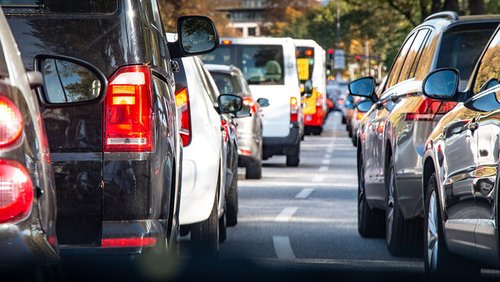- In Europe trucks transport most of the goods. Rail and inland waterway address completely different market segments than the truck.
- Commercial vehicles are highly specialized – there are particular versions for every transport task.
- Commercial vehicles are implements for mostly high mileage. Low fuel consumption and low (fuel-) costs are an indispensable competitive advantage for operators.
- While in the EU28 the share of commercial vehicles in total CO2 emissions has gained a growing importance and main drivers for this are light commercial vehicles, total emissions of road transport have been decreasing since 2007 in Europe.
- Todays Heavy duty vehicles drive more fuel-efficiently and much cleaner than in the past – under real road conditions (proven by RDE testing).
- Building materials, food and beverages as well as light and high-value goods dominate the volume of trucks. Only in a few segments road competes directly with the rail.
- Vehicles are becoming more efficient. Important potentials still lie with tyres, aerodynamics and in operation.
- With joined forces industry, logistik und politics can still raise considerable efficiency reserves.
- As for trucks, the load volume is usually already exhausted before the permissible total weight is reached. Larger-volume trucks and innovative trailers can further gain in transport efficiency.
- The majority of approved commercial vehicles have less than 3.5 tonnes gross vehicle weight. Heavy trucks represent only a small portion of the stock, but due to their high mileage they account for the majority of CO2 emissions from freight traffic. On the other hand, heavy trucks are on average much more modern than light duty vehicles, so that innovation quickly prevails here.
In Europe trucks transport most of the goods. Rail and inland waterway address completely different market segments than the truck.

